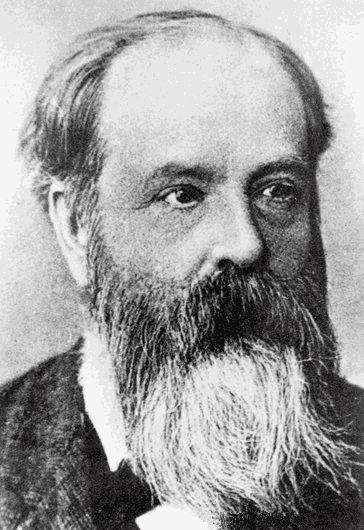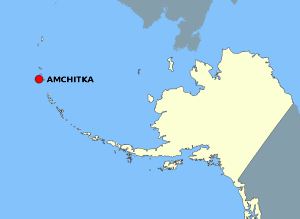|
Jenny Nelson
Jenny Nelson is Professor of Physics in the Blackett Laboratory and Head of the Climate change mitigation team at the Grantham Institute - Climate Change and Environment at Imperial College London. Education Nelson was educated at the University of Cambridge and the University of Bristol where she obtained her PhD in 1988 for research on the optics of fractal clusters supervised by Michael Berry. Research and career Nelson's research is devoted to characterising the materials used to build and improve photovoltaic devices, which convert energy from the Sun into electricity. She applies a range of tools that include physical models, simulation and experiments to optimise the performance of such devices through their composite materials. Over the last twenty-five years, Nelson has worked with many types of energy converting materials, ranging from molecular materials to inorganic materials such as nanocrystalline oxides, and organic–inorganic hybrids. She uses informa ... [...More Info...] [...Related Items...] OR: [Wikipedia] [Google] [Baidu] |
Royal Society
The Royal Society, formally The Royal Society of London for Improving Natural Knowledge, is a learned society and the United Kingdom's national academy of sciences. The society fulfils a number of roles: promoting science and its benefits, recognising excellence in science, supporting outstanding science, providing scientific advice for policy, education and public engagement and fostering international and global co-operation. Founded on 28 November 1660, it was granted a royal charter by Charles II of England, King Charles II and is the oldest continuously existing scientific academy in the world. The society is governed by its Council, which is chaired by the society's president, according to a set of statutes and standing orders. The members of Council and the president are elected from and by its Fellows, the basic members of the society, who are themselves elected by existing Fellows. , there are about 1,700 fellows, allowed to use the postnominal title FRS (Fellow ... [...More Info...] [...Related Items...] OR: [Wikipedia] [Google] [Baidu] |
Institute For Scientific Information
The Institute for Scientific Information (ISI) was an academic publishing service, founded by Eugene Garfield in Philadelphia in 1956. ISI offered scientometric and bibliographic database services. Its specialty was citation indexing and analysis, a field pioneered by Garfield. Services ISI maintained citation databases covering thousands of academic journals, including a continuation of its longtime print-based indexing service the Science Citation Index (SCI), as well as the Social Sciences Citation Index (SSCI) and the Arts and Humanities Citation Index (AHCI). All of these were available via ISI's Web of Knowledge database service. This database allows a researcher to identify which articles have been cited most frequently, and who has cited them. The database provides some measure of the academic impact of the papers indexed in it, and may increase their impact by making them more visible and providing them with a quality label. Some anecdotal evidence suggests that appearing ... [...More Info...] [...Related Items...] OR: [Wikipedia] [Google] [Baidu] |
Imperial College Union
Imperial College Union is the Students' Union, students' union of Imperial College London. It is host to varied societies and has student bars situated around Albertopolis. The Union is based in the north wing of the Beit Quadrangle on Prince Consort Road. History The establishment of a students' union was recognised with the construction of the north building of Beit Quad in 1910-11 designed by Sir Aston Webb. The original idea for the building came from Arthur Dyke Acland, Sir Arthur Acland, a member of the governing body, who saw the need for a place for students to congregate and develop a collegiate social life. Timeline * 1907 Formation of Imperial College of Science and Technology incorporating the Royal School of Mines, the Royal College of Science and City and Guilds College * 1910 Imperial College Union formed by approval of the College's Governing Body * 1911 The Union building in South Kensington is constructed * 1922 Founder member of NUS (leaves for the first ... [...More Info...] [...Related Items...] OR: [Wikipedia] [Google] [Baidu] |
Institute Of Physics Michael Faraday Medal And Prize
The Michael Faraday Medal and Prize is a gold medal awarded annually by the Institute of Physics in experimental physics. The award is made "for outstanding and sustained contributions to experimental physics." The medal is accompanied by a prize of £1000 and a certificate. Historical development * 1914-1965 Guthrie Lecture initiated to remember Frederick Guthrie, founder of the Physical Society (which merged with the Institute of Physics in 1960). * 1966-2007 Guthrie Medal and Prize (in response to changed conditions from when the lecture was first established). From 1992, it became one of the Institute's Premier Awards. * 2008–present Michael Faraday Medal and Prize Medalists and lecturers Faraday medalists * 2024 Laura Herz, "For pioneering advances in the photophysics of next-generation semiconductors, accomplished through innovative spectroscopic experiments." * 2023 Neil Alford, Mark Oxborrow, Chris Kay, Jonathan Breeze, Juna Sathian and Enrico Salvador ... [...More Info...] [...Related Items...] OR: [Wikipedia] [Google] [Baidu] |
James Joule Medal And Prize
The James Joule Medal and Prize is awarded by the Institute of Physics. It was established in 2008, and was named in honour of James Prescott Joule, British physicist and brewer. The award is made for distinguished contributions to applied physics. The medal is silver and is accompanied by a prize of £1000. The medal gained international recognition in 2018 when it was awarded to Sri Lankan scientist Ravi Silva of University of Surrey, whose work in part led to the establishment of the Sri Lanka Institute of Nanotechnology (SLINTec). Recipients The following persons have received this medal: * 2024 Carole Tucker, for outstanding work on the development and provision to the worldwide scientific community of metamaterial-based quasi-optical components for far infrared to millimetre wavelength astronomical instruments and other applications. * 2023 Jan-Theodoor Janssen, for outstanding contributions to fundamental and practical quantum electrical metrology. * 2022 Michael Holyn ... [...More Info...] [...Related Items...] OR: [Wikipedia] [Google] [Baidu] |
Institute Of Physics
The Institute of Physics (IOP) is a UK-based not-for-profit learned society and professional body that works to advance physics education, physics research, research and applied physics, application. It was founded in 1874 and has a worldwide membership of over 20,000. The IOP is the Physical Society for the UK and Ireland and supports physics in education, research and industry. In addition to this, the IOP provides services to its members including careers advice and professional development and grants the Professional qualifications in the United Kingdom, professional qualification of Chartered Physicist (CPhys), as well as Chartered Engineer (UK), Chartered Engineer (CEng) as a nominated body of the Engineering Council; it also holds its own separate Royal Charter. The IOP's publishing company, IOP Publishing, publishes 85 academic titles. History The Institute of Physics was formed in 1960 from the merger of the Physical Society of London, Physical Society, founded as ... [...More Info...] [...Related Items...] OR: [Wikipedia] [Google] [Baidu] |
Engineering And Physical Sciences Research Council
The Engineering and Physical Sciences Research Council (EPSRC) is a British UK Research Councils, Research Council that provides government funding for grants to undertake research and postgraduate degrees in engineering and the physical sciences, mainly to universities in the United Kingdom. EPSRC research areas include mathematics, physics, chemistry, artificial intelligence and computer science, but exclude particle physics, nuclear physics, space science and astronomy (which fall under the remit of the Science and Technology Facilities Council). Since 2018 it has been part of UK Research and Innovation, which is funded through the Department for Business, Energy and Industrial Strategy. History EPSRC was created in 1994. At first part of the Science and Engineering Research Council (SERC), in 2018 it was one of nine organisations brought together to form UK Research and Innovation (UKRI). Its head office is in Swindon, Wiltshire in the same building (Polaris House) that hou ... [...More Info...] [...Related Items...] OR: [Wikipedia] [Google] [Baidu] |
Greenpeace
Greenpeace is an independent global campaigning network, founded in Canada in 1971 by a group of Environmental movement, environmental activists. Greenpeace states its goal is to "ensure the ability of the Earth to nurture life in all its biodiversity, diversity" and focuses its campaigning on worldwide issues such as climate change, deforestation, overfishing, whaling, commercial whaling, genetic engineering, Anti-war movement, anti-war and anti-nuclear issues. It uses direct action, advocacy, research, and ecotage to achieve its goals. The network comprises 26 independent national/regional organisations in over 55 countries across Europe, the Americas, Africa, Asia, Australia and the Pacific, as well as a coordinating body, Greenpeace International, based in Amsterdam, Netherlands. The global network does not accept funding from governments, corporations, or political parties, relying on three million individual supporters and foundation grants. [...More Info...] [...Related Items...] OR: [Wikipedia] [Google] [Baidu] |
Semiconductor
A semiconductor is a material with electrical conductivity between that of a conductor and an insulator. Its conductivity can be modified by adding impurities (" doping") to its crystal structure. When two regions with different doping levels are present in the same crystal, they form a semiconductor junction. The behavior of charge carriers, which include electrons, ions, and electron holes, at these junctions is the basis of diodes, transistors, and most modern electronics. Some examples of semiconductors are silicon, germanium, gallium arsenide, and elements near the so-called " metalloid staircase" on the periodic table. After silicon, gallium arsenide is the second-most common semiconductor and is used in laser diodes, solar cells, microwave-frequency integrated circuits, and others. Silicon is a critical element for fabricating most electronic circuits. Semiconductor devices can display a range of different useful properties, such as passing current more easil ... [...More Info...] [...Related Items...] OR: [Wikipedia] [Google] [Baidu] |
Photovoltaic
Photovoltaics (PV) is the conversion of light into electricity using semiconducting materials that exhibit the photovoltaic effect, a phenomenon studied in physics, photochemistry, and electrochemistry. The photovoltaic effect is commercially used for electricity generation and as photosensors. A photovoltaic system employs solar modules, each comprising a number of solar cells, which generate electrical power. PV installations may be ground-mounted, rooftop-mounted, wall-mounted or floating. The mount may be fixed or use a solar tracker to follow the sun across the sky. Photovoltaic technology helps to mitigate climate change because it emits much less carbon dioxide than fossil fuels. Solar PV has specific advantages as an energy source: once installed, its operation does not generate any pollution or any greenhouse gas emissions; it shows scalability in respect of power needs and silicon has large availability in the Earth's crust, although other materials required in ... [...More Info...] [...Related Items...] OR: [Wikipedia] [Google] [Baidu] |
Creative Commons License
A Creative Commons (CC) license is one of several public copyright licenses that enable the free distribution of an otherwise copyrighted "work". A CC license is used when an author wants to give other people the right to share, use, and build upon a work that the author has created. CC provides an author flexibility (for example, they might choose to allow only non-commercial uses of a given work) and protects the people who use or redistribute an author's work from concerns of copyright infringement as long as they abide by the conditions that are specified in the license by which the author distributes the work. There are several types of Creative Commons licenses. Each license differs by several combinations that condition the terms of distribution. They were initially released on December 16, 2002, by Creative Commons, a U.S. non-profit corporation founded in 2001. There have also been five versions of the suite of licenses, numbered 1.0 through 4.0. Released in Novemb ... [...More Info...] [...Related Items...] OR: [Wikipedia] [Google] [Baidu] |




